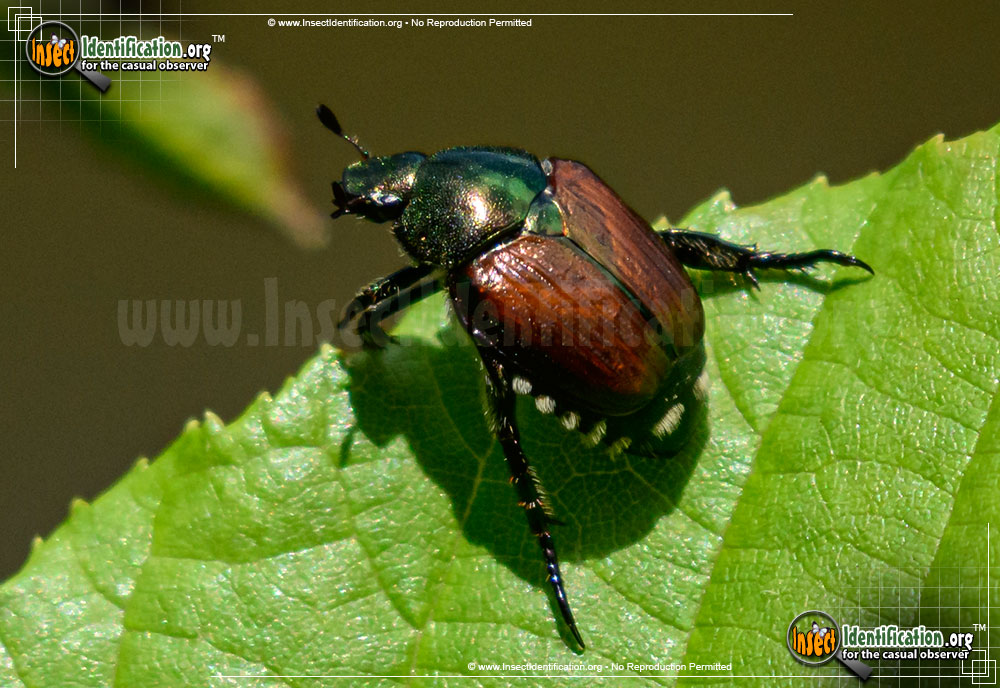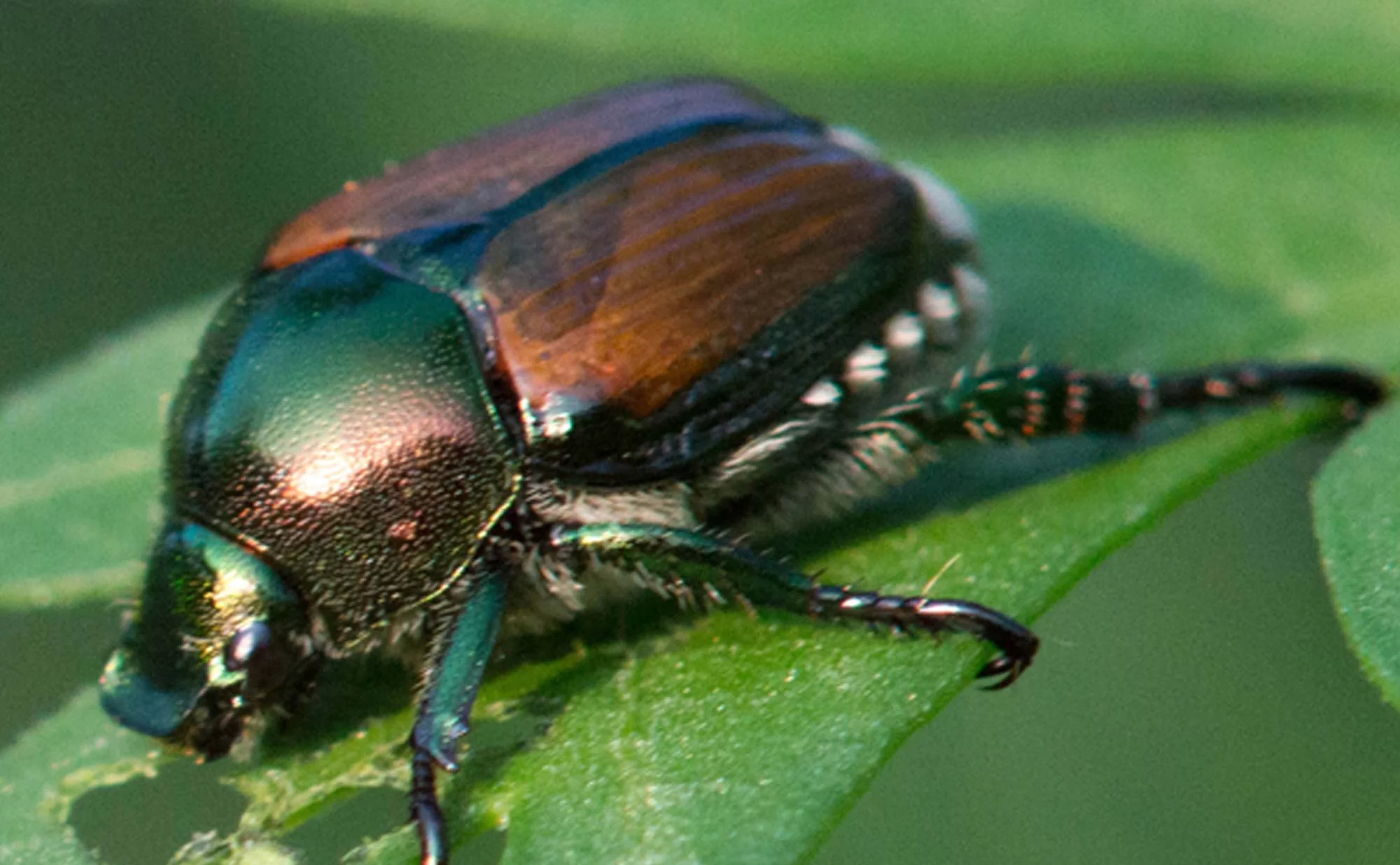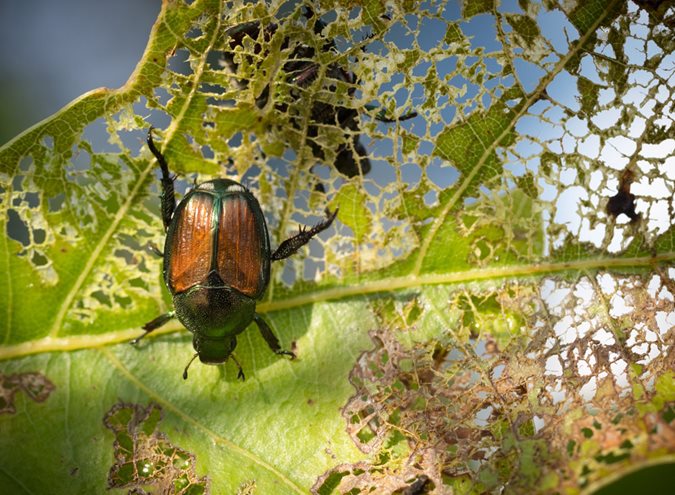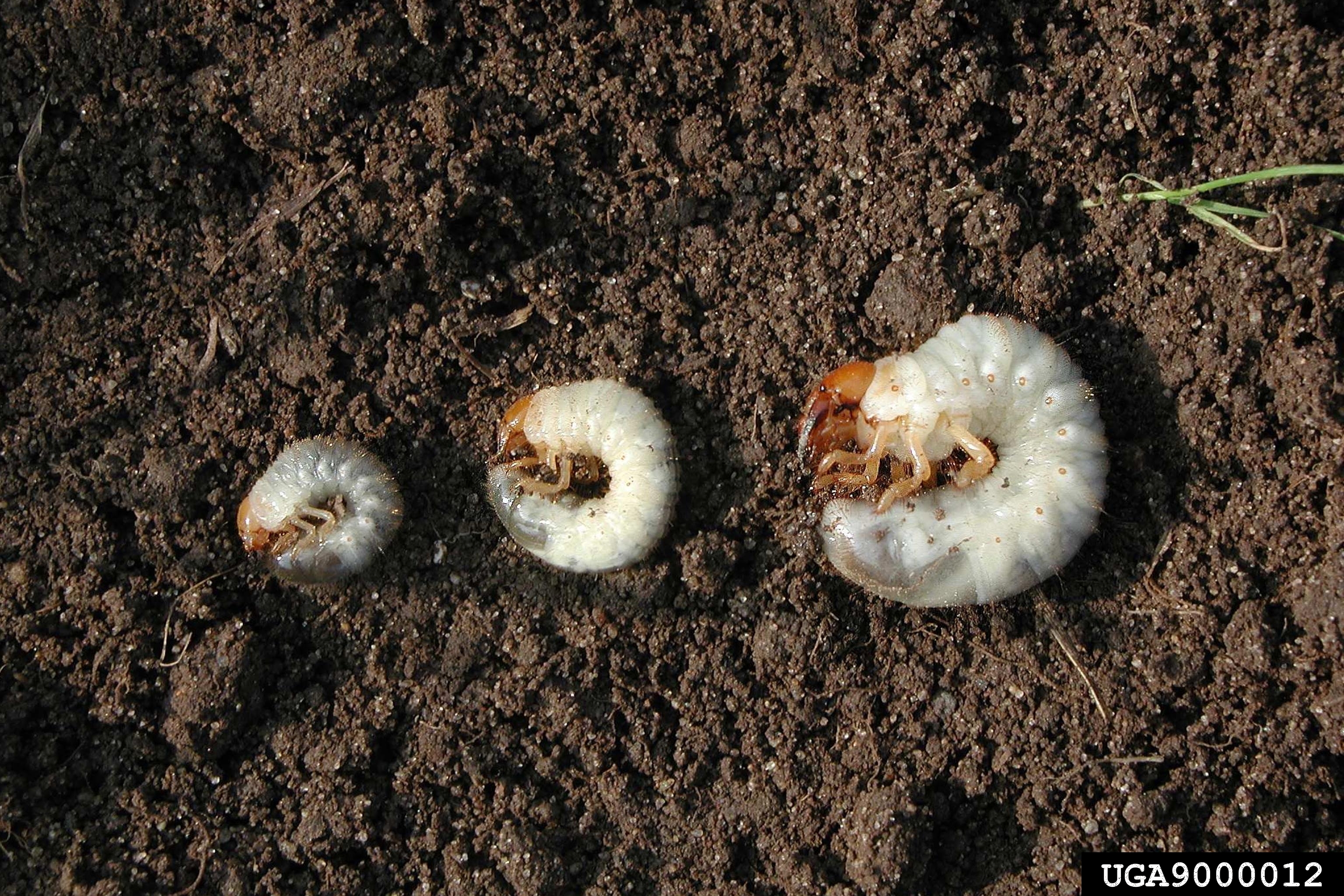japanese beetle life cycle colorado
Japanese beetles are metallic green with coppery-brown elytra hardened front wings and are about a half-inch long. They emerge from the soil in June and are most actively feeding through August.
Tagawa Has The Tools You Need To Fight Japanese Beetles
Damage caused by grubs may not be noticeable until after severe lawn damage becomes obvious.
. Each female lays up to 60 eggs as an. What is the life cycle of the Japanese beetle. Unfortunately our love for lush green lawns comes gives them just the nursery theyre looking for.
Life cycle and habits. Japanese beetles have a one-year four-stage life cycle like butterflies but JBs take one full year. Biology and Life Cycle one-year complete life cycle from egg larva pupa adult.
The Japanese beetle has a one year life cycle. Following their life cycle will help in understanding when and what control products to use. White grubs are becoming a major problem for lawns in Colorado due to irrigation.
On warm sunny days the new beetles crawl onto low growing plants and warm for a while before taking flight. O Japanese beetle life cycle image o Website address of CSU Japanese beetle information for people to take pictures Emerald Ash Borer o Emerald ash borer in 2 vials grub adult o Ash tree bark wood o Be a Smart Ash pamphlets o Emerald ash borer life cycle image Game of Fact or Fiction Reference binder with more. The immature stage of the Japanese beetle the white grub typically has a three year life cycle.
In the spring as the soil warms Japanese beetle grubs migrate to the surface briefly feeding on grass roots. The first beetles out of the ground seek out suitable food plants and begin to feed immediately. Around the very end of June or early in July the adult beetles will emerge from your lawn and start showing up on your plants.
Adults may begin to emerge from the soil in early June and are usually most abundant in early summer from late June through early August. Please take a few minutes and complete the Japanese Beetle Plant Survey to help with a regional plants list of plants they like and dont like. Adult beetles are most active in the heat of the day and are voracious feeders on ornamental and agricultural plant.
Japanese beetle larvae are annual white grubs. Japanese beetle has a life cycle that takes one year to complete. Larvae that have matured by June pupate and the adult beetles emerge from the last week of June through July.
In late June and early July adult beetles emerge. Colorado was originally thought to be protected from invasive Japanese beetle. The adult females then lay eggs in the soil which hatch and the larvae start chomping down on your grass.
Adults usually emerge in June females begin egg laying until September. Adult Japanese Beetles feed on a wide range of broadleaf plants and weed but at the grub stage this lawn-damaging insect will also feed on a wide variety of plant roots including ornamental trees and shrubs. Orkin Termite Treatment Pest Control Exterminator Service.
Japanese beetles go through a one-year life cycle but if you have a yard you care about the real joy with beetles comes in the second half of the summer in Colorado. Beetles will remain active for about 4-6 weeks. A Japanese beetle life cycle is completed in one year.
Larvae live in the soil where they feed on plant. The well-watered root zones of our turf grass. Grubs are up to 1 inch long C-shaped and have six legs.
Colorado was originally thought to be protected from invasive Japanese beetlePopillia japonicacolonization and establishment due to our semi-arid climate. Knowing a little about this insects life cycle will help in managing and minimizing the damage. Prevention Mitigation and Management of Japanese Beetle Prevention Mitigation and Management of Japanese Beetle.
Through winter the Japanese beetle in the larval stage a white grub found within soil. Life cycle of Japanese beetles. However some adults may be found into September.
Adult females lay eggs in moist sod in July. Shiny metallic green one-half inch long beetles swarm plant foliage feeding on the top of the. With understanding of the Japanese beetles life cycle and the management options that can be used during the larval and adult stages well continue to enjoy our landscape plants and gardens for many years.
Please take a few minutes and complete the Japanese Beetle Plant Survey to help with a regional plants list of plants they like and dont like. With understanding of the Japanese beetles life cycle and the management options that can be used during the larval and adult stages well continue to enjoy our landscape plants and gardens for many years. Adults usually emerge from grass turf where they finished their underground life cycle in.
A white grub is the immature larval form of a scarab beetle such as a European chafer or Japanese beetle. Japanese beetle has a one year life cycle. Japanese beetles have a one-year complete life cycle from egg larva pupa adult.
In central Maryland beetle emergence begins in mid-June and peaks in early July. Grubs live in the soil feeding on plant roots. The Japanese beetle was first introduced into Colorado in the early 1990s from nursery stock purchased in the mid-western United States.
Adult beetles can be detected in traps until early September depending on weather conditions. Japanese beetles spend most of their lives as a soil grub. Female adult beetles each lay 40 to 60 eggs in their lifetime.
The egg-larva-pupa-adult life cycle begins when the adult beetles emerge from their winter home spent as larva and pupa below turf grass. This is when grubs are present in the top inch of the root zone heavily feeding on grass roots and thatch. Larvae and eggs of Japanese beetle need at least 10 inches of soil moisture to thrive.
Scientists and experts were caught off guard by the ability of the pest to establish itself in our region thinking that Japanese beetle an insect that likes moisture and humidity would never become a problem in the semi-arid Colorado climate. Japanese Beetle in Colorado. The progressive life stages of the Japanese beetle during that period are egg larva white grub pupa adult.
The entire life cycle requires about one year. The larvae of Japanese Beetles are white grubs with a distinct V-shaped series of bristles on their rasters. The grubs are C-shaped and approximately 125 inches when fully grown.
In Colorado adult beetles emerge from the soil mid to late June with peak emergence occurring in mid to late July. However most of the damage to ornamentals and turf grass happens during the spring and fall the second year. Japanese beetles life cycle begins in our lawns.

Japanese Beetle Habitat Facts How To Get Rid Of Japanese Beetles Safer Brand

9 Scents That Japanese Beetles Hate And How To Use Them Pest Pointers

Effective Management Remains Elusive For Beetle That Eats Almost Anything

Japanese Beetle Popillia Japonica
Colorado Garden Punch List Betty Cahill Japanese Beetle Spring Larvae Control

Schedule My Japanese Beetle Treatment Today Rainbow Treecare

Tips On How To Control Japanese Beetles In Colorado

Colorado Garden Punch List Betty Cahill Japanese Beetle Update July August 2017

How To Get Rid Of Japanese Beetles Garden Design
Japanese Beetle Management In Minnesota

How To Control Japanese Beetles Organically Japanese Beetles Garden Pests Garden Pest Control

Get Ready For Japanese Beetles Ross Tree Company Denver Colorado

Japanese Beetle Pests Soybean Integrated Pest Management Ipm Field Crops Purdue University

How To Prevent Japanese Beetles Lawn Care Blog Lawn Love

How To Get Rid Of Japanese Beetles In Your Yard

Vegetable Scarab Beetle Japanese Oriental And Asiatic Garden Beetles Center For Agriculture Food And The Environment At Umass Amherst


